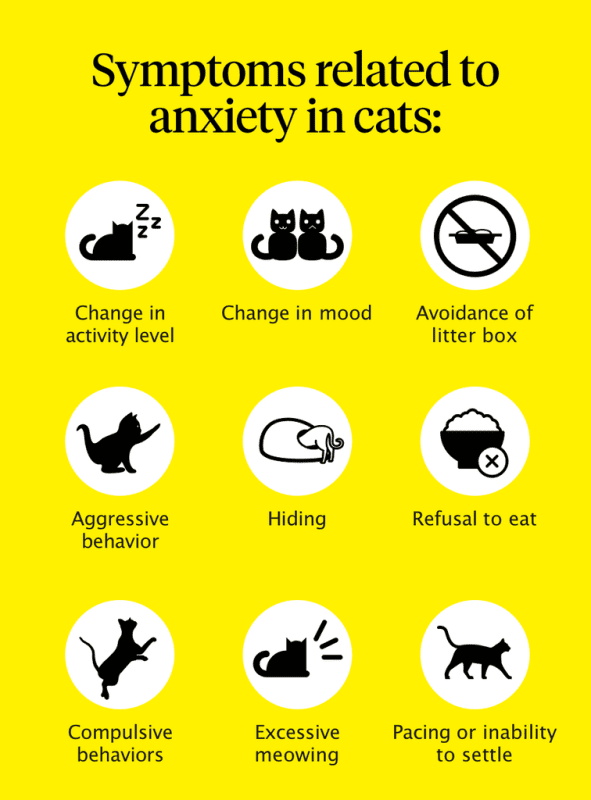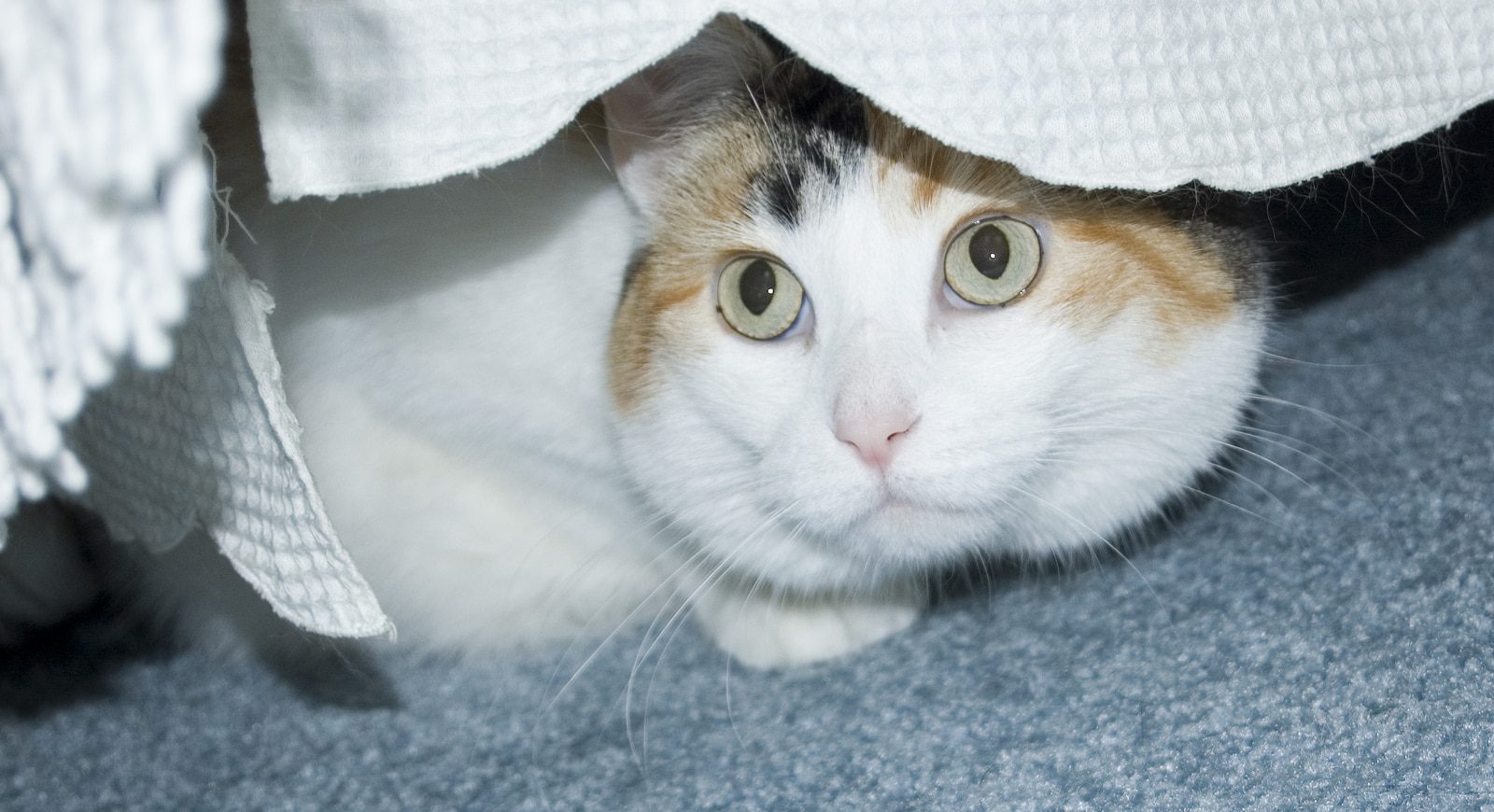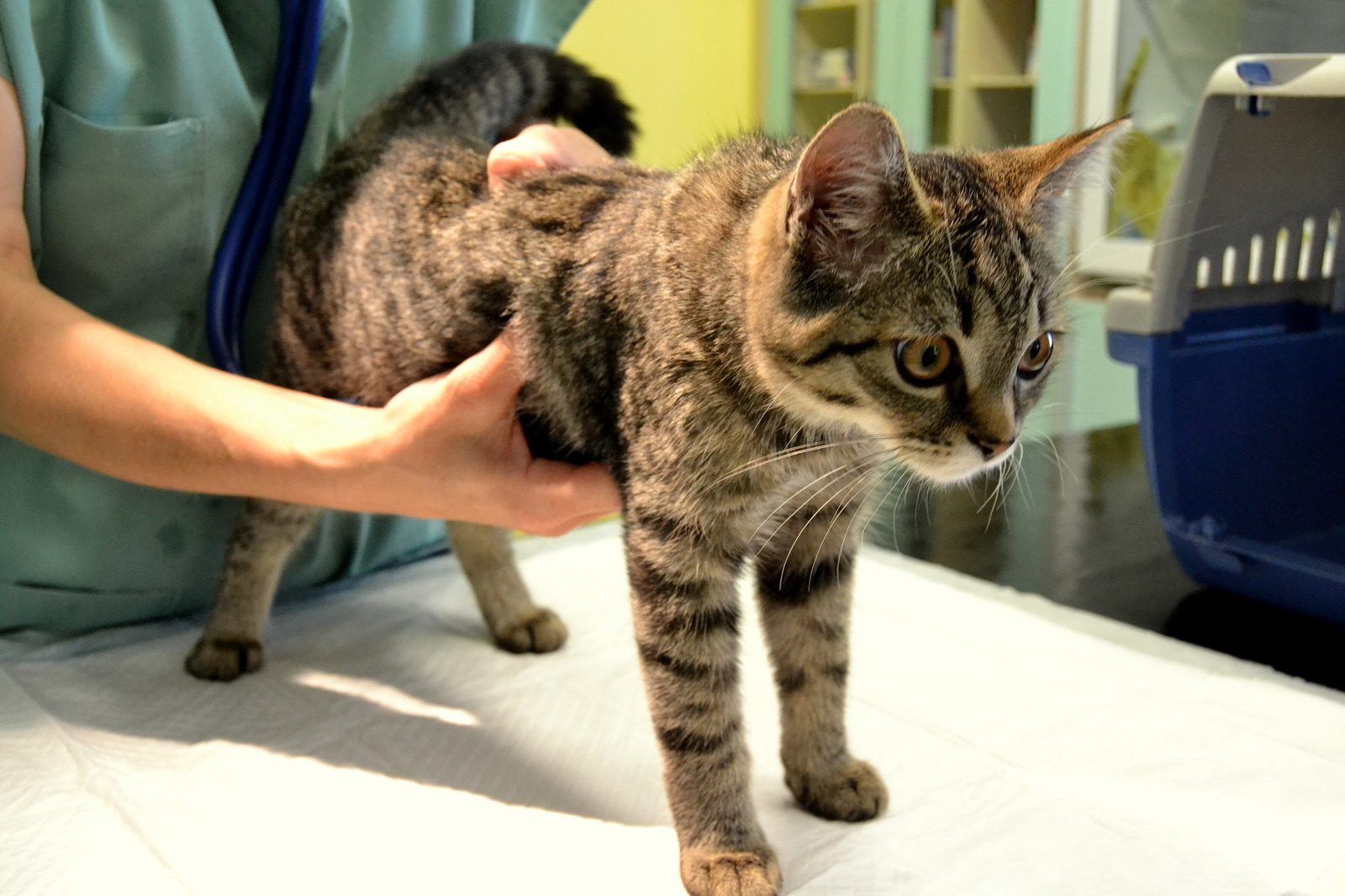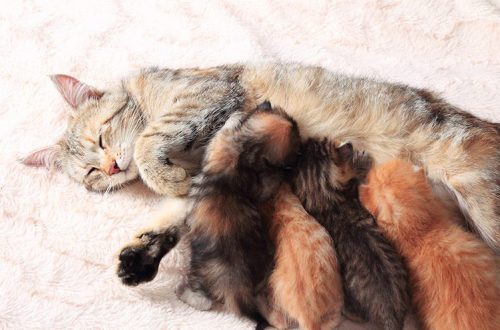
Anxiety in a cat: causes and signs
Have you ever seen your cat jump up and down in fright, making everyone laugh? But a shy, restless cat is not funny. Animal anxiety can become a serious problem if left uncorrected. If you think your cat is stressed and nervous, read this article to find out what’s going on and how to help.
Contents
Causes of Anxiety in Cats
 experience anxiety when they sense danger coming from “an unknown or imagined source, which leads to the body’s normal responses to fear,” explains PetMD. In other words, an anxious cat is constantly stressed and scared for no apparent reason. However, this does not mean that there is no reason at all. You just need to spend some time looking for it.
experience anxiety when they sense danger coming from “an unknown or imagined source, which leads to the body’s normal responses to fear,” explains PetMD. In other words, an anxious cat is constantly stressed and scared for no apparent reason. However, this does not mean that there is no reason at all. You just need to spend some time looking for it.
There are many possible causes of stress in cats. Anxiety can be caused by pain or illness, exposure to toxins and infections that affect the nervous system. Psychological factors include traumatic events, lack of socialization, and experiences of abuse and neglect. Brain aging can also cause anxiety, especially in older cats suffering from memory problems or dementia. Joint pain in older cats can also be a source of anxiety, manifested in an attempt to hide or refusal to use the litter box. Other possible causes of anxiety in a cat include new furniture and rearrangement, the arrival of a new pet or child in the house, and even a new home.
One of the most common forms of anxiety is separation anxiety: your cat becomes nervous and depressed when you leave her line of sight or leave her alone at home. This is especially true for cats that have been thrown out into the street, given to a new home, or passed from owner to owner several times, PetMD notes.
Cats can also be affected by obsessive-compulsive disorder (OCD), which is characterized by excessive, repetitive activities. The causes of OCD in cats are not known for certain, and in most cases the disease is characterized as a mental disorder, which, however, can be triggered by stress, say the authors of the PetMD portal. Owners may unwittingly exacerbate OCD in pets by trying to calm them down or by paying attention to them during unwanted behaviors. It should be noted that some breeds have a genetic predisposition to behavior patterns characteristic of obsessive-compulsive disorder. This behavior is most commonly seen in Siamese and other Asian breeds.
So how do you spot signs of anxiety in a cat?
Watch Behavior
A restless pet is easy to spot. The PetMD portal highlights the following signs and symptoms of anxiety in a cat:
- Shiver.
- Refusal to communicate and the desire to hide.
- Decreased activity.
- Eagerness to run away.
- Destructive and aggressive behavior.
- Diarrhea.
- Refusal to use the tray.
- Wounds and injuries from excessive licking.
Other symptoms include decreased appetite, weight loss, excessive meowing, lethargy and agitation, notes the PetMD portal. OCD can be recognized by excessive, repetitive activities such as eating, sucking or chewing on tissue, excessive licking, continuous meowing or howling, and constant walking. If the cat’s anxiety is caused by separation, then the cat will return to normal when you appear, but may become anxious again if it senses that you are about to leave.
How to help a stressed cat
The most important thing you need to know in order to help an anxious cat is that you should not punish or scold him for his restless behavior. This will only exacerbate her negative perceptions and fear and make the situation worse. Your goal is to help her relax and feel safe.
 As soon as you notice restless behavior in your pet, schedule a visit with your veterinarian right away to confirm the presence or absence of diseases or toxins causing stress in your pet. Cats tend to hide pain from their owners, so finding a problem will not be easy and may require blood tests and other tests. If it turns out that the problem is caused by pain or disease, the right treatment may be enough to get your pet back to normal.
As soon as you notice restless behavior in your pet, schedule a visit with your veterinarian right away to confirm the presence or absence of diseases or toxins causing stress in your pet. Cats tend to hide pain from their owners, so finding a problem will not be easy and may require blood tests and other tests. If it turns out that the problem is caused by pain or disease, the right treatment may be enough to get your pet back to normal.
On the other hand, the veterinary specialist can also detect a psychological cause of the problem, such as neurosis. In this case, he will most likely give you recommendations regarding the course of treatment.
In addition to anti-anxiety medication, your veterinarian will likely recommend a trainer or animal psychologist to help you shape your pet’s desired behaviors and get rid of unwanted ones. Shaping the desired behavior involves identifying your cat’s fear factors and either reducing susceptibility to them through repeated, safe interaction with them, or removing them from the animal’s environment. Getting rid of unwanted behavior involves replacing the unwanted behavior with the desired one, with the formation of positive associations associated with the desired behavior. For example, if your cat gets anxious when you’re about to leave, train her to go to bed at that time and reward her with a treat or favorite toy when she does as you ask. Over time, she will associate your leaving with encouragement and learn to deal with her anxiety. The main goal of training and shaping the desired behavior is to show the cat that she is safe and can relax.
Leaving the problem unattended
The anxiety won’t go away on its own and will likely only get worse over time, with the unwanted behavior becoming more pronounced. Like humans, chronic stress affects mental health in animals. With continued exposure, stress depresses the nervous system and makes the cat more vulnerable to disease, which in turn increases stress. In addition, she may develop severe depression, which, combined with anxiety, will exacerbate behavioral problems. To preserve not only the health of the cat, but also peace in the house, it is necessary to start treatment as soon as possible.
If you see your cat meowing and showing concern, don’t lose heart. Thanks to your love, patience and willingness to help, she has every chance of recovering and returning to a full healthy life.





